Banded panchax - Pseudepiplatys annulatus
Scientific name: Pseudepiplatys annulatus
Common name: Banded panchax
Family: Nothobranchiidae
Usual size in fish tanks: 4 - 5 cm (1.57 - 1.97 inch)
014
Recommended pH range: 6.6 - 7.2
Recommended water hardness: 4 - 15°N (71.43 - 267.86ppm)
0°C 32°F30°C 86°F
Recommended temperature range: 22 - 24 °C (71.6 - 75.2°F)
The way how these fish reproduce: Spawning
Where the species comes from: Africa
Temperament to its own species: peaceful
Temperament toward other fish species: peaceful
Usual place in the tank: Middle levels
Origin
The Banded Panchax (Pseudepiplatys annulatus) originates from the freshwater rivers and streams of West Africa, primarily in Guinea and Liberia. They are commonly found in slow-moving, heavily vegetated waters with soft, acidic conditions. Replicating these natural conditions in the aquarium is key to their well-being.
Tank Requirements
Due to their small size, a minimum tank size of 40 liters (10 gallons) is recommended for a group of Banded Panchax. A heavily planted tank with plenty of hiding spots created by floating plants, Java moss, or driftwood will help them feel secure. As they naturally inhabit shallow waters, a tank with low water flow is ideal. Additionally, a tight-fitting lid is necessary, as these fish are known jumpers.
The water parameters should be maintained within a pH range of 6.6-7.2 and a hardness level of 4-15°N (71.43-267.86 ppm). The ideal temperature for these fish is between 22-24°C (71.6-75.2°F). Regular partial water changes are crucial to keep the water quality high, as they are sensitive to fluctuations in water conditions.
Tankmates
Banded Panchax are peaceful and can be kept with other small, non-aggressive fish. Ideal tankmates include:
- Ember Tetra (Hyphessobrycon amandae)
- Dwarf corydoras (Corydoras pygmaeus)
- Mosquito rasbora (Boraras brigittae)
While they can live peacefully in a community tank, many keepers prefer housing them in a species-only tank to promote breeding and increase the captive-bred population.
Food and Feeding
Banded Panchax are not fussy eaters and will readily accept a variety of foods. Due to their small size, it is often necessary to crush flake food or provide small-sized pellets. A balanced diet should include quality flakes or micro-pellets as the staple, supplemented with live or frozen foods like brine shrimp, bloodworms, and daphnia. Offering a variety of foods will help keep them healthy and enhance their coloration.
Feed them small portions multiple times a day, as they have small stomachs and prefer frequent meals over one large feeding. Avoid overfeeding, as it can lead to poor water quality and health issues.
Sexing
As juveniles, Banded Panchax are challenging to sex. However, as they mature, males develop more vibrant coloration in their tails, while females’ tails remain clear or lightly tinted. Additionally, males will have slightly extended fins, making them distinguishable from the more rounded fins of the females.
Breeding
Pseudepiplatys annulatus are group spawners that can be bred in a well-planted tank. To encourage breeding, add Java moss or spawning mops to provide a surface for egg attachment. Keep the water parameters slightly acidic and maintain a temperature around 23°C (73.4°F). The breeding group should consist of several males and females, allowing them to pair off naturally.
After spawning, the adults should be removed from the tank to prevent them from eating the eggs. The eggs will hatch in 8-12 days, depending on the water temperature. Once the fry become free-swimming, they can be fed on Infusoria or other tiny food sources. As they grow, introduce newly hatched brine shrimp to their diet to support healthy development.
Lifespan
The expected lifespan for Pseudepiplatys annulatus is 3-5 years, provided they are kept in optimal water conditions and receive a balanced diet. Regular maintenance of the tank and stable water parameters are key factors in their longevity.
Short Description
The Banded Panchax, known for its unique banded coloration, is a peaceful killifish that thrives in planted aquariums. They are best kept in groups of at least six to replicate their natural schooling behavior. While they can adapt to a community setup, a species-only tank is preferred by many aquarists to encourage breeding and conservation of this beautiful species. Their small size and gentle nature make them a great choice for aquarists seeking a peaceful, easy-to-care-for fish with stunning visual appeal.
Pictures
Bought by aqua-fish.net from jjphoto.dk.
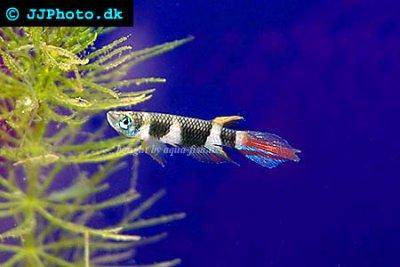



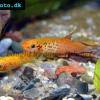 Lyretail
Lyretail  Splendid
Splendid  Redchin
Redchin  Panchax
Panchax 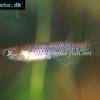 Sixbar
Sixbar  Amiets
Amiets  Blue
Blue 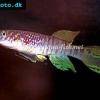 Blue
Blue 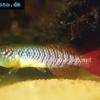 Guenthers
Guenthers